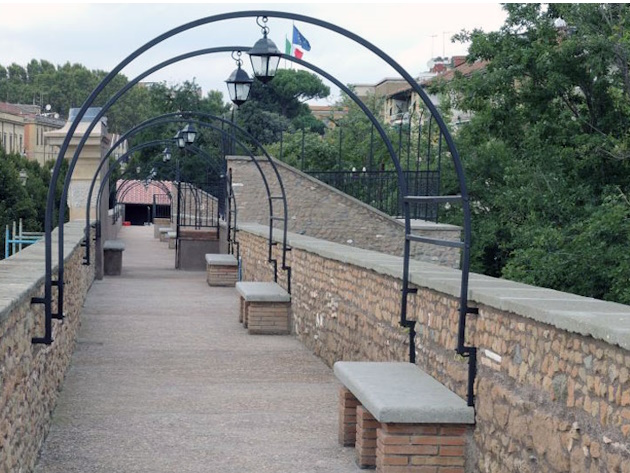
The walkway in the section of the Aurelian Walls in Viale Pretoriano between Via dei Frentani and Via dei Ramni opened to the public for the first time on 3 July 2021.
The Viale Pretoriano walkway is restored according to the situation in the 18th century when the ancient path was transformed into a promenade with a view of the city and the countryside.
At that time, a 5-metre minimum burying was made in order to level the ancient orography to the heights of the modern city and for the construction of Villa Gentili, later Dominici.
Information
Admission to the monument is allowed to groups and associations, with their own guide, who must make a reservation at 060608 (daily, 9.00 - 19.00).
Maximum 25 people per visit.
For individual visitors, who must also make a reservation at 060608, individual visits are also possible according to a schedule specified on the page > Monumenti del territorio
Not accessible to the disabled
 Condividi
Condividi
Locations
To find out about all accessibility services, visit the Rome accessible section.











































